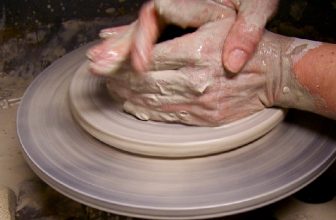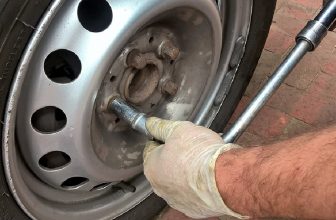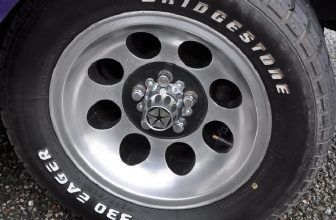How to Clean Wheel Wells
Cleaning wheel wells is an important part of vehicle maintenance and upkeep. It makes your car look better and can help extend the life of certain parts, such as brake components and tires, by keeping them free from corrosion or damage caused by dirt, rocks, and debris that might become lodged in the wheel well area.
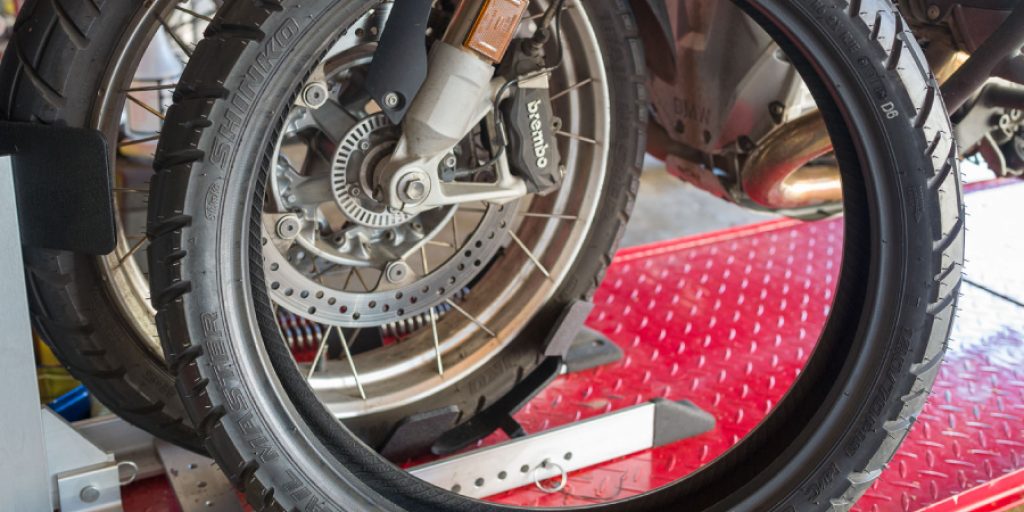
Additionally, debris buildup can interfere with the performance of your brakes and tires, so it’s important to regularly clean your wheel wells to ensure your car is running as safely and efficiently as possible. Cleaning your vehicle’s wheel wells isn’t difficult if you have the right supplies and follow the correct cleaning steps. In this blog post, You will learn in detail how to clean wheel wells.
Step-by-Step Processes for How to Clean Wheel Wells
Step 1: Inspect Your Wheel Wells
Take a closer look at your wheel wells and clean off any surface dirt. Check for rust, corrosion, or areas that may need to be patched up with sealant before you begin cleaning.
Step 2: Gather Supplies
Get a bucket of warm water mixed with car wash soap, a soft-bristled brush, small sponges, and a cloth. You will also need a car wash mitt or sponge with an abrasive side to scrub off the dirt and grime that has built up on your wheel wells. Begin by wetting down the wheel wells using the car-wash soap mixture and a damp cloth. Start on the upper wheel well and move down to the lower one, scrubbing off dirt gently with your sponge or cloth as you go.
Step 3: Use a Soft, Bristled Brush
Scrub any stubborn grime stuck to the wheel wells’ surface using a soft-bristled brush. Be sure not to scratch the surface of your wheel well as you scrub. After removing all the dirt and grime, rinse the wheel wells with clean water and dry them off with a cloth.

Step 4: Apply Wheel Well Cleaner
Use a car wash cleaner specifically designed for cleaning wheel wells. This cleaner will dissolve dirt, grease, and grime that has been stuck to the surface of your wheel well for an extended period of time. After applying the cleaner onto the wheel wells, gently scrub it into the surface with a small sponge or cloth. Allow the cleaner to sit for a few minutes before rinsing off.
Step 5: Rinse Cleaner & Wheel Wells
After letting the cleaner sit, rinse away any remaining residue from the wheel wells with clean water and dry off with a cloth. Now that your wheel wells are clean inspect them for any damage or rust that may have been missed in the original inspection. If you find any, be sure to repair it before continuing on.
The last step is to wax and polish your wheel wells with a car-specific wax to protect them from future dirt and grime buildup. This will also give the wheel wells a nice, glossy finish.
Tips for How to Clean Wheel Wells
- Wear proper protective clothing and safety gear, including gloves, eye protection, and a face mask or respirator to protect you from debris or chemical exposure.
- Park your vehicle on a flat surface with the wheels facing away from other objects.
- Use soap and water to remove any dirt, mud, or grime that may have accumulated in the wheel wells.
- Use a tire brush or an old toothbrush to remove any caked-on dirt.
- If needed, use a degreaser or other cleaning products specifically made for wheels and rims to break down grease and grime.
- Rinse with water after you finish cleaning, and dry the area with a cloth.
Following these steps will help you ensure your safety while keeping your wheel wells clean and debris-free.
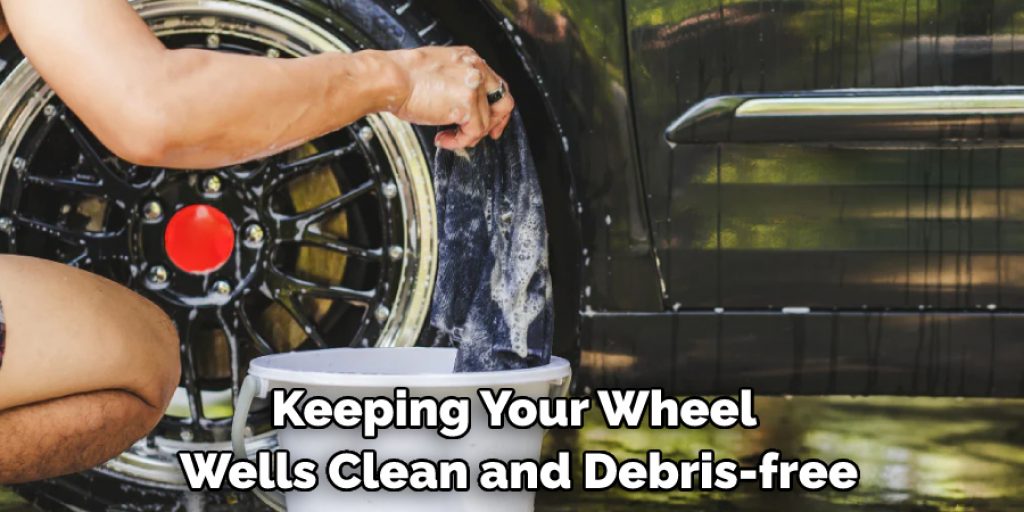
How Can You Prevent Dirt and Grime From Building Up on Your Wheel Wells in the Future?
Once your wheel wells have been thoroughly cleaned, you can take a few preventative measures to reduce the amount of dirt and grime that accumulates on them in the future. Here are some tips:
- Wash Your Car Regularly: This is probably the most obvious way to keep your wheel wells clean, but it’s also the most important. Make sure to use a car-specific soap and give your wheels a thorough scrub.
- Use Protective Coating: Getting a protective coating on your wheel wells can help prevent dirt and grime from sticking in the first place. Wax or marine-grade sealant are good options for this purpose.
- Use a Wheel Tire Cleaner: If you don’t have time to clean your wheels every week, try using a wheel and tire cleaner. These sprays are specifically designed to break up dirt and grime quickly and easily.
By following these tips, you can help reduce the amount of dirt and grime that builds up on your wheel wells each time you drive.
How Can You Access Hard-to-Reach Areas in Your Wheel Wells?
Sometimes, the wheel wells on a car can be hard to reach in areas that need cleaning. Here are some tips if you want to clean these areas but don’t know how to access them. First, ensure that your vehicle is well-supported and at a suitable angle for working in the wheel well. You can use blocks or ramps to get the desired angle and provide support for your car.
Next, you will need a few tools, such as a wire brush, an old toothbrush, a dish scrubber, a vacuum cleaner, and some mild detergent or cleaning solution. If you can’t access the wheel well with your arm, use a pole with a brush or sponge attached. Once you have all your tools and supplies ready, it is time to start cleaning. Start by spraying the wheel well with water and then scrubbing the area using your wire brush. This will help loosen any dirt and debris that has accumulated over time. After this step, take your old toothbrush and scrub the area to remove any smaller particles.

Conclusion
In conclusion, cleaning your wheel wells is an important part of regular car maintenance. It helps keep dirt, grime, and corrosion from building up in the area and causing safety issues down the road. By following these simple steps—including washing off the surface with a hose or pressure washer, using soap and degreaser to remove stuck-on grime, scrubbing the area with a brush or old cloth and rinsing, drying off the area, and applying a protective wax—you can ensure your wheel wells stay looking their best and performing their best.
With regular maintenance, you can rest assured that this important part of your car’s undercarriage will remain in top-notch condition for years to come. I hope this article has been beneficial for learning how to clean wheel wells. Make Sure the precautionary measures are followed chronologically.


